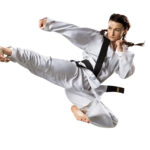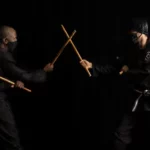“Glimpse or flash” is the literal translation of a Scandinavian martial art form known as Glima. This “grappling” style of combat is said to have originated from Norway essentially as a “self-defense” system. Apparently, this form of combat was used frequently by warriors during the “Viking Era”. Furthermore, Glima comprises of many elements belonging to several types of wrestling practiced in the Scandinavian region. In addition, this combat style also plays an important role as a form of “entertainment” in Scandinavian society.
History/origin of Glima:
According to the cultural history of Norway, it was during the “Viking period” that this combat style was first developed. Apparently, the Viking warriors loved sports especially wrestling. Now, there were several variations of wrestling available throughout the Scandinavian region that was frequently used by the Vikings as a form of combat. Furthermore, it was the Norwegians who were settled in Iceland that brought Glima into the country. It is said that the Icelandic people had managed to preserve their Norwegian roots, and hence this form of combat known as “Glima” was kept alive. In addition, it was in an Icelandic law book known as “Gragas” that the rules for this form of wrestling were written and maintained. It was in the 1912 Summer Olympics held in Sweden that this Scandinavian wrestling style was for the first time publically demonstrated.
The weapon used in the Glima:
Since “grappling” techniques are mainly involved in Glima the weapon used are the “hands and legs” of the fighter. In addition, a few types of Glima such as the Lausatok involve the use of weapons such as sword, axe, spear, stick, and knife.
The technique involved in the Glima and training availability:
In terms of technique, the Glima basically is based on “grappling” style of combat. Furthermore, moves such as joint locks, strikes, kicks, chokes, and pain techniques are frequently used in this form of combat by a fighter to overcome an opponent. As for training centers/schools, there are a number of them available in the Scandinavian region for those interested in learning this “grappling” combat form.
')}






